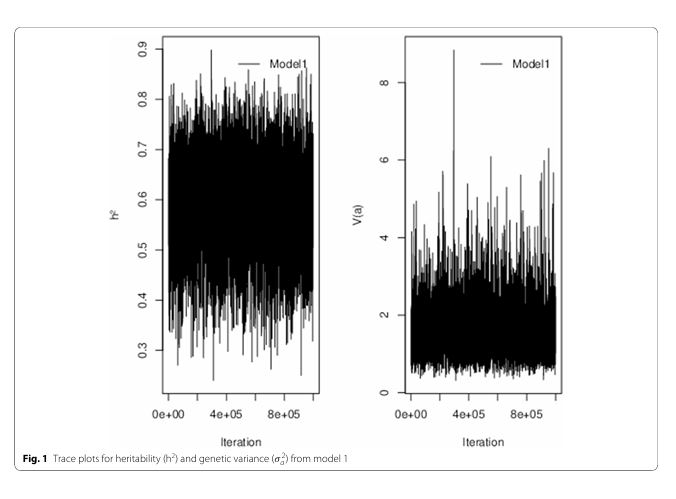Heritability of distichiasis in Havanese dogs in Norway
1/9
Earn XP
Name | Mastery | Learn | Test | Matching | Spaced |
|---|
No study sessions yet.
10 Terms

Figure 1
Question: How do heritability estimates converge in Bayesian models?
Methods: Trace plots of heritability and genetic variance across MCMC iterations.
Results: Convergence was achieved, supporting the reliability of the Bayesian threshold model.
What is the main question of this paper?
The study investigates the prevalence and heritability of distichiasis (a condition involving misplaced eyelashes) in the Havanese dog breed in Norway and evaluates whether genetic selection could reduce its occurrence.
Main Methods: Data Collection
Data from 1,156 Havanese dogs with eye certificates from the Norwegian Kennel Club database (2005–2020) were analyzed.
Main Methods: Heritability Analysis
Both linear models and Bayesian threshold models were used to estimate the genetic influence on the trait.
Main Methods: Classification
Dogs were classified as affected or unaffected based on the European College of Veterinary Ophthalmologists (ECVO) examination guidelines.
Main Methods: Statistical Analysis
Linear model heritabilities were transformed to the underlying liability scale.
Bayesian threshold models used Gibbs sampling for parameter estimation.
Correlations between breeding values estimated by the two methods were calculated.
Key Results: Prevalence
14.5% of the sampled Havanese dogs were affected by distichiasis, most cases classified as "mild."
Key Results: Heritability Estimates
Linear model heritability: ~0.28.
Bayesian threshold model heritability: 0.59–0.72.
Converted heritability from linear models to the liability scale: ~0.66–0.67.
Key Results: Sex and Age Effects
No significant difference in prevalence between sexes. Late-onset cases were rare, suggesting distichiasis usually develops early.
Key Results: Breeding Recommendations
Dogs with severe distichiasis or ectopic cilia should not be bred, while those with mild cases could be bred with unaffected partners.